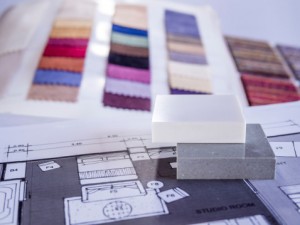How Much Say Should Your Employees Have in Their Work Environment?

I was just on Pinterest looking up low-carb, gluten-free vegan snacks for people with nut allergies. But that’s neither here nor there. While on the site, though, I stumbled across pins on decorating your cubicle and realized that if you give people an 8×8 space, they will bedazzle it like no man’s business. They will turn that impersonal space into their space. Closed-door office, cubicle, or desk in an open-concept room, it doesn’t matter. And you know what, it’s good for them and for their productivity. Creating a personalized workspace is highly motivating, but how much input should employees have into the actual design?
Workplace Design: Where Do Employees Fit In?
I’m a big proponent of allowing employees to participate in decorating, and even designing, workspaces. But it has to be on-brand. Before you start ripping out walls, talk about:
- What is your company brand?
- What does it stand for?
- If a client, supplier, or potential employee walked in, what would they notice, feel, and believe?
You can turn it into a business challenge, allowing your people to fully use their creativity and interpretation while staying on-strategy and on-brand. These parameters don’t stifle innovation; in fact, they can spark it. It’s like giving a kid a box of Legos and saying, “Here, build something.” Your brand is Lego; those are the pieces with which your people have to play and create.
Employees Lacking Motivation?
Paul Marchildon, an experienced Leisureologist, can work with you and your team to increase productivity by incorporating leisure into the workplace.A Redesign Case Study
Three years into Atlantis Creative Group, the company was growing rapidly and needed a new space. We were able to lease space in the Toronto Carpet Factory, circa 1900 and completely gut it to its bare bones: wood floors, 15’ ceilings, brick walls. Very warehouse chic. Before we redesigned, though, my architect interviewed all of the employees so we could get a sense of what they needed from their workspace.
We ended up with a sort of open office – cubicle hybrid, but one in which everyone had privacy. If you were sitting at your desk, a half-wall meant you didn’t have to look over your shoulder before you checked an email. But if you stood up, you could have a conversation with the person next to you. We were big on the Buddy System there.
We were also big on our binders. You never met a group of people more enamored of binders. So, naturally, they played a big role in the actual design. Employees needed to access them quickly and conveniently, so we planned shelving to accommodate them. Just a swivel of their Aeron chairs (which the employees also had input on), and they had the information they needed.
An enclosed conference room provided privacy for client meetings or those times when you didn’t want to tell everyone in the office about your test results or that, yes, you would pick up the dry cleaning and some milk. In addition, we created an open conference room. It provided a little more space for meetings, and at the same time, it contributed to the lively, dynamic atmosphere. Clients could walk in and listen to a creative session (as long as it didn’t violate confidentiality – then we’d go to a room with full walls, a door, and total privacy).
The space we created was conducive to collaboration, but it also allowed independent “focus” time. It had personality, and it fit with our culture and brand. The design was ideally suited for the work that we did, and employee input was vital in achieving that.
When people feel a sense of ownership of their workplace, they’re more productive and satisfied. It becomes their space. Inviting employees to participate in the design process, if possible, can be the most effective way to build an office that they will love – and that they will love working in.
PS. Found a good low-carb, gluten-free vegan snack for people with nut allergies: water.
